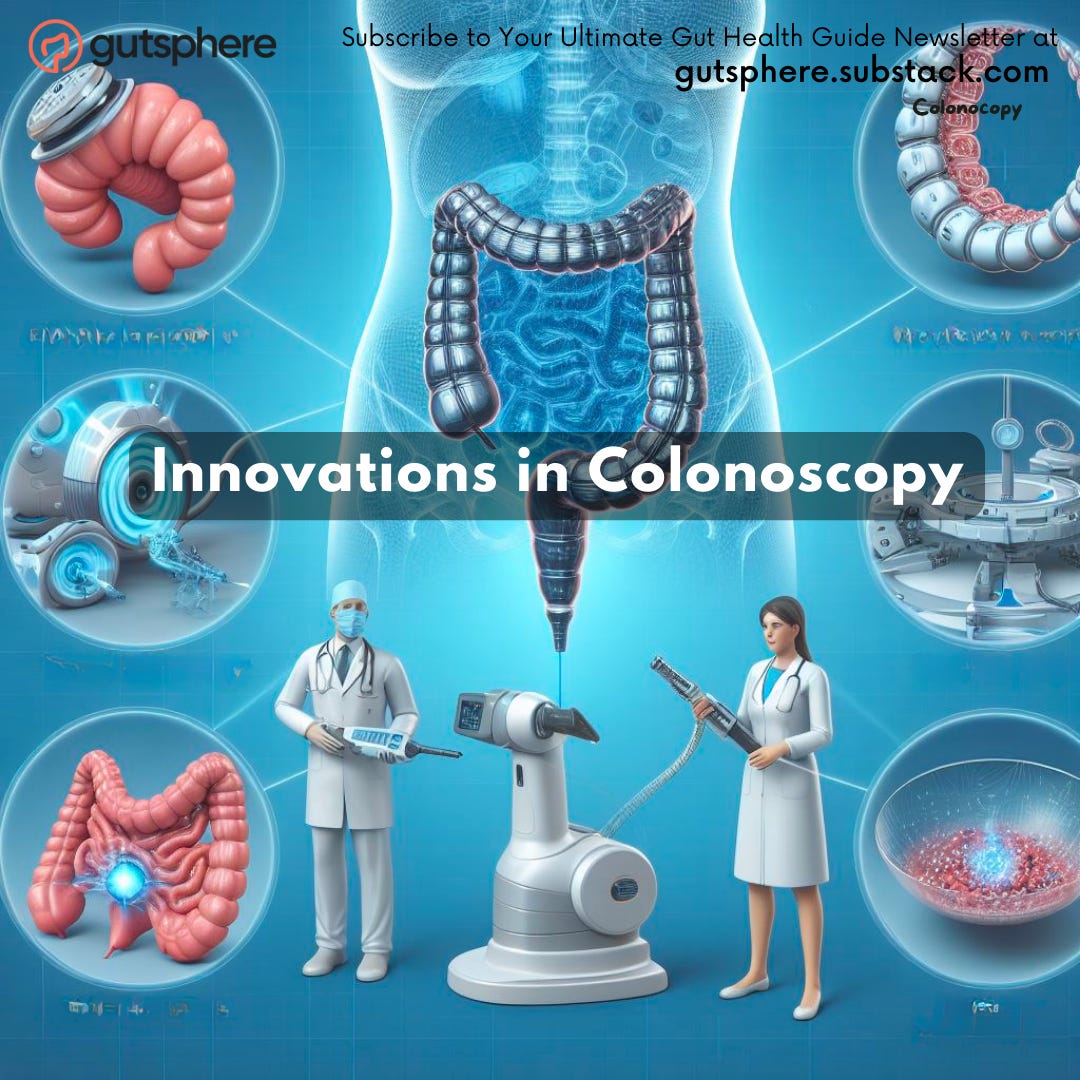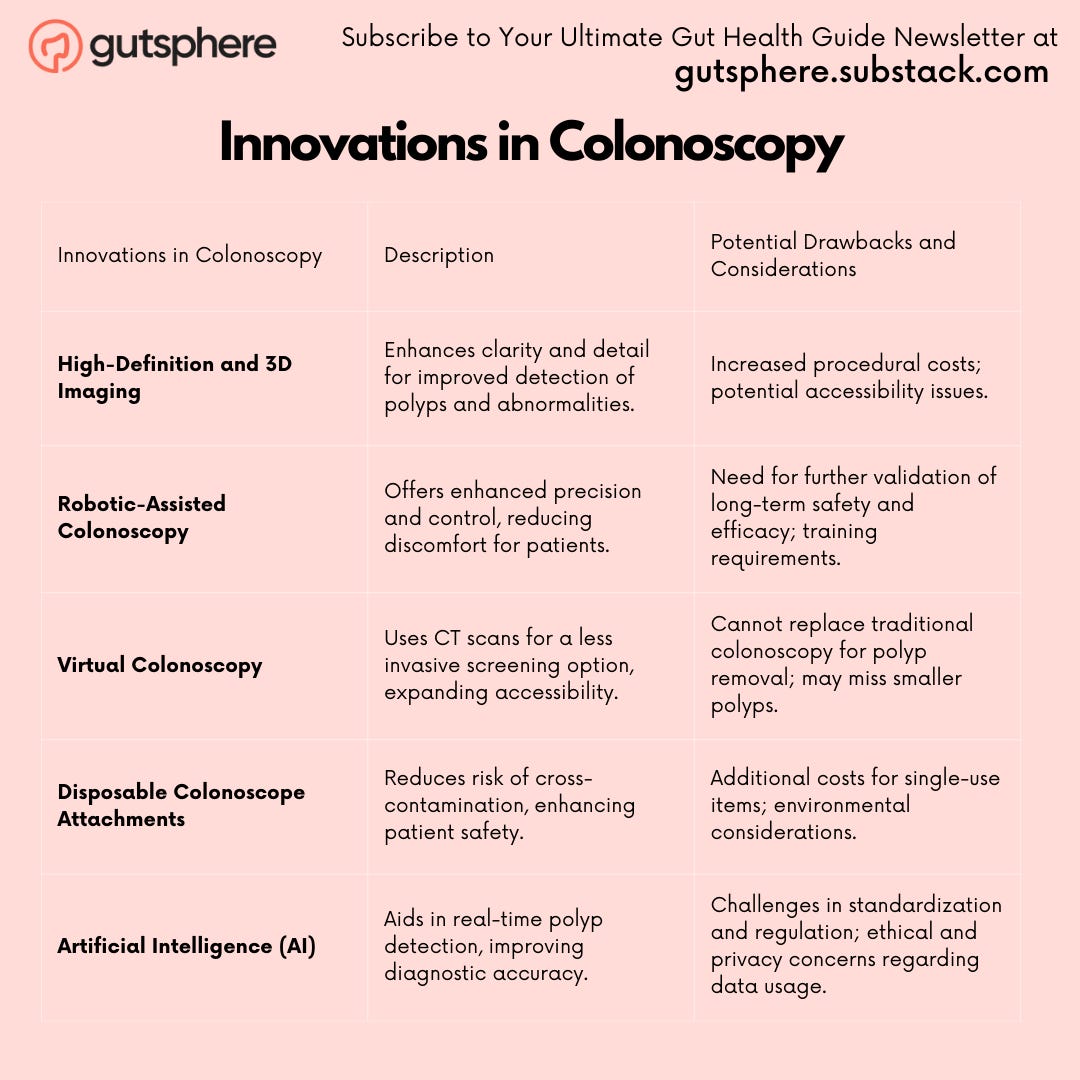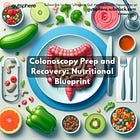Innovations and Advances in Colonoscopy(Part5/10)
An exploration of technological advancements and procedural innovations that are making colonoscopies more accurate and less invasive
PREVIOUS
Introduction: A New Dawn in Colonoscopy
Welcome back to our Gutsphere community as we embark on yet another enlightening journey through the world of gastrointestinal health. In this fifth edition, we cast a spotlight on the horizon of colonoscopy technology and methodology. As we delve into the latest innovations and advances, we stand at the cusp of a new era where colonoscopies are becoming more accurate, less invasive, and significantly more patient-friendly. Let’s explore together how these breakthroughs are reshaping the landscape of colorectal cancer screening and what it means for you.
The Vanguard of Colonoscopy Innovation: A Nuanced Exploration
The realm of colonoscopy is witnessing a revolutionary transformation, driven by groundbreaking technological advancements. These innovations are not merely enhancing the procedural aspects of colonoscopies; they are redefining the entire experience, making it more effective, less invasive, and significantly more patient-friendly. Let's delve into the vanguard of colonoscopy innovation, exploring how these advancements are setting new standards in the detection and prevention of colorectal diseases.
1. High-Definition and 3D Imaging
The advent of high-definition (HD) and 3D imaging technologies marks a significant leap forward in the field of colonoscopy. Traditionally, colonoscopies relied on standard video technology, which, while effective, had limitations in clarity and detail. The introduction of HD and 3D imaging has dramatically changed this landscape.
With HD imaging, doctors can now view the colon's interior with unprecedented clarity and detail. This enhancement in visualization allows for the detection of polyps and other abnormalities with a level of precision previously unattainable. Moreover, 3D imaging adds another dimension to this clarity, providing a comprehensive view of the colon's structure. This depth of detail ensures that even the smallest and most subtle anomalies are detected, significantly improving the procedure's diagnostic accuracy.
2. Robotic-Assisted Colonoscopy
The integration of robotic technology into colonoscopy procedures represents another frontier in innovation. Robotic-assisted colonoscopy leverages advanced robotics to guide the colonoscope with enhanced precision and control. This technology not only improves the accuracy of polyp detection but also offers a smoother and less discomforting experience for patients.
Robotic systems can navigate the twists and turns of the colon with ease, reducing the pressure and discomfort often associated with manual navigation. Moreover, the steadiness and precision of robotic assistance minimize the risk of tissue damage, making the procedure safer. For doctors, robotic-assisted colonoscopy provides better maneuverability, allowing for more thorough examinations and potentially shorter procedure times.
3. Virtual Colonoscopy
Virtual colonoscopy emerges as a beacon of innovation for those seeking less invasive screening options. Utilizing computed tomography (CT) scans, this method allows for a detailed inspection of the colon without the need for sedation or the insertion of a colonoscope. While not a direct substitute for traditional colonoscopy, especially in cases where polyp removal is necessary, virtual colonoscopy offers a valuable screening tool for individuals at lower risk or those unable to undergo conventional procedures.
The process involves the digital reconstruction of CT images into a detailed, three-dimensional model of the colon, enabling physicians to identify polyps and other abnormalities with remarkable accuracy. This non-invasive approach not only broadens access to colorectal cancer screening but also reduces the procedure's physical and psychological barriers, encouraging more individuals to undergo timely screenings.
4. Disposable Colonoscope Attachments
In the quest for enhanced patient safety, the development of disposable colonoscope attachments has marked a significant advancement. These single-use sheaths and attachments address one of the lingering concerns in colonoscopy: the risk of cross-contamination. Despite rigorous sterilization protocols, the reuse of colonoscopes posed a minimal but concerning risk of transmitting infections.
Disposable attachments now offer a solution by ensuring that the parts of the colonoscope that come into direct contact with the patient are brand new for each procedure. This innovation significantly reduces the risk of infection, bringing peace of mind to patients and healthcare providers alike and upholding the highest standards of hygiene and safety.
5. Artificial Intelligence (AI) in Colonoscopy
Perhaps the most transformative innovation in colonoscopy is the integration of artificial intelligence (AI). AI and machine learning algorithms are being developed to assist gastroenterologists in real-time during colonoscopies. These AI systems analyze the video feed from the colonoscope, identifying polyps and other abnormalities that might require closer examination.
AI's role in colonoscopy is akin to having an additional expert in the room, constantly reviewing the procedure's visuals and flagging potential areas of concern. This level of support not only enhances the detection rates of polyps but also serves as a valuable educational tool for physicians, improving their diagnostic skills. By decreasing oversight and augmenting the physician's capabilities, AI is setting a new standard in patient care and safety.
Examples of Innovations and Advancement in Colonoscopy.
High-Definition and 3D Imaging:
Olympus’ EVIS EXERA III: This is a colonovideoscope that utilizes an advanced Dual Focus optical system and Narrow Band Imaging (NBI) to produce clear, bright images for observation during colonoscopies1.
Pentax’s i-Scan: It is a digital, image-enhanced endoscopy (IEE) technology that provides an enhanced view of the mucosal structures and vascular patterns, supporting early detection, demarcation, and characterization during colonoscopy2.
Robotic-Assisted Colonoscopy:
Medrobotics Flex® Robotic System: This system is used for visualization and surgical site access to the anus, rectum, and distal colon. It combines the benefits of a rigid endoscope with a computer-coordinated controller for colonoscopy procedures3.
Virtual Colonoscopy:
GE Healthcare’s LightSpeed VCT: This volumetric CT scanner is used for virtual colonoscopy, providing detailed images of the colon that can be used for screening and diagnostic purposes4.
Disposable Colonoscope Attachments:
EndoSheath® Technology: This is a sterile, single-use product with an integrated working channel, used with flexible endoscopes to provide a barrier between the scope and the patient, thus reducing the risk of cross-contamination during procedures like colonoscopy5.
Artificial Intelligence (AI):
Iterative Scopes’ SKOUT: SKOUT is an AI-assisted polyp detection device designed to detect potential colorectal polyps in real-time during colonoscopy examinations. It aids gastroenterologists by providing colorectal polyps location information to assist in identifying potential colorectal polyps6
Potential Drawbacks and Considerations: Navigating the Complexities of Colonoscopy Innovations
As we traverse the landscape of advancements in colonoscopy technology, it's essential to cast a light on the nuanced aspects that accompany innovation. While the advancements promise a future of more effective, less invasive procedures, they also bring forth a spectrum of considerations that warrant a closer examination. Understanding these potential drawbacks and considerations is crucial for patients, healthcare providers, and policymakers alike, ensuring that the evolution of colonoscopy technology aligns with the overarching goal of improving patient care without unintended consequences.
1. The Cost Implication of Advanced Technologies
One of the most immediate considerations of integrating high-tech advancements into routine colonoscopies is the increase in procedural costs. Technologies such as high-definition and 3D imaging, robotic-assisted colonoscopy systems, and AI-enhanced detection tools involve significant investment in equipment, training, and maintenance. This financial burden can trickle down to healthcare systems and, ultimately, patients, potentially affecting the accessibility of these innovative procedures.
Increased Healthcare Spending: The adoption of cutting-edge technologies may lead to higher healthcare spending, which could impact insurance premiums and out-of-pocket costs for patients.
Accessibility Concerns: There's a risk that the benefits of these technologies could be limited to patients in higher-income brackets or those with comprehensive insurance coverage, inadvertently widening the health disparity gap.
2. Long-term Safety and Efficacy of AI and Robotic Systems
The integration of artificial intelligence and robotic systems in colonoscopies represents a frontier of potential and promise. However, the long-term safety, efficacy, and ethical considerations of these technologies remain under continuous scrutiny.
Reliability of AI: While AI has shown great promise in enhancing polyp detection rates, the algorithms must undergo extensive validation to ensure their reliability across diverse patient populations and settings.
Dependency on Technology: There's a concern that an over-reliance on AI and robotic systems could impact the skill development and decision-making capabilities of new gastroenterologists, altering the fundamental nature of clinical practice.
3. The Challenge of Standardization and Regulation
As innovations proliferate, standardizing these technologies and ensuring they meet rigorous regulatory standards becomes a complex endeavor. The pace at which technology evolves often outstrips the ability of regulatory bodies to create and enforce comprehensive guidelines, leading to potential variability in the quality and safety of colonoscopy procedures.
Quality Assurance: Ensuring that all technological advancements meet high-quality standards is essential for patient safety and the overall efficacy of colonoscopies.
Regulatory Oversight: Balancing innovation with appropriate regulatory oversight is crucial to maintaining trust in these new technologies and ensuring they deliver on their promises without compromising patient care.
4. Ethical and Privacy Considerations of Data Usage
The use of AI in colonoscopy, particularly in analyzing patient data for polyp detection, raises important questions about data privacy, consent, and the ethical use of medical information. Ensuring the security of patient data and transparent communication about how data is used are paramount.
Patient Consent: Patients must be fully informed about how their data will be used, particularly in the development and training of AI systems.
Data Security: Protecting patient data from breaches is critical as healthcare systems increasingly rely on digital technologies.
Conclusion: Embracing the Future Together
As we journey into the future of colonoscopy innovations, striking a balance is crucial. We must weigh the advancements in technology against their potential challenges, ensuring that every step forward in colonoscopy innovation truly enhances patient care, access, and safety. Engaging in open dialogue across all stakeholders, we aim to harness these innovations to make colonoscopies more efficient, less invasive, and widely accessible, thereby advancing the early detection and prevention of colorectal cancer. Yet, amidst this technological progress, the importance of personal health and wellness remains paramount, serving as the cornerstone of effective prevention and recovery.
Next
Until then, stay curious, stay inspired, and above all, stay healthy.
Warm regards,
Your Gutsphere Team
Request
Share
Our sincere request to you is to share the newsletter with your friends, family, and community so that they can benefit from the content. Also it will help us grow the newsletter, and eventually, as we release more content, digital tools, and more we will enable people around the world to live chronic disease free.
Subscribe
Feedback
Also, please give us feedback so that we can improve the content. And if there are any topics that you want us to cover please send us your questions and topics. Furthermore, if you try any of the things we provided information please share your experience with us.
Disclaimer
Please note that the information provided in this newsletter is for informational purposes only and should not be considered as a substitute for professional medical advice, diagnosis, or treatment. If you have any concerns or questions about our health, please consult with a licensed healthcare professional. The information contained in this newsletter is not intended to diagnose, treat, cure, or prevent any disease. The publisher and authors of this newsletter assume no responsibility for any adverse effects that may result from the use of the information contained herein.





